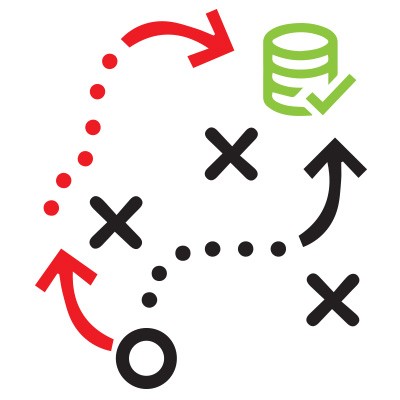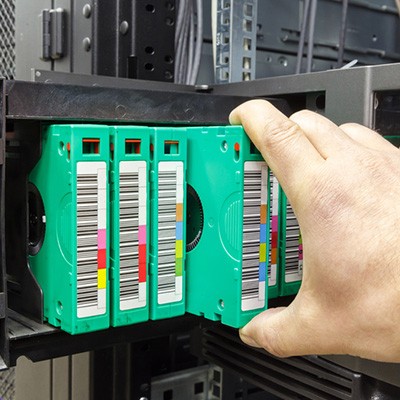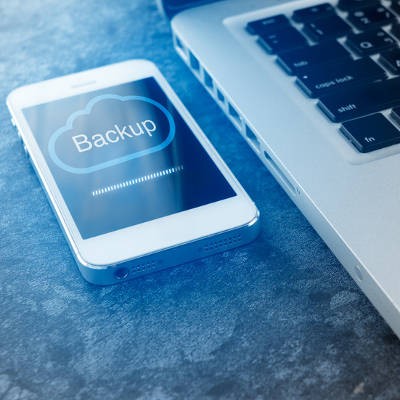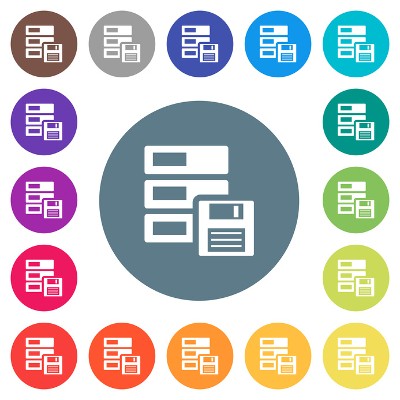It doesn’t take a deep thinker to know that your business is extremely limited without its data. There are dozens of antivirus solutions on the market for this very reason. One of the best ways to protect your digital assets is to back up data using a reliable backup platform. In today’s blog, we’ll go over a few basic considerations to make if you want a data backup that you can trust.
Argentum IT LLC Blog
If you have been running a business for any length of time, you definitely don’t need to be told how important risk management is. One problem you see from business owners today is that while they understand just how many problems there are--and which ones they need to find solutions for first--they want to grow their company fast, and as a result, they overlook potential problems and end up hurting their business as a result.
There are numerous backup strategies. Some are attractive for their affordability, some for their comprehensiveness, but regardless of the strategy you use, it will need to fit the kind of work that you do. Some businesses need to make considerations for the amount of data that is created, and what would happen if it were lost. This is where an operational backup strategy comes into play. Let’s take a look at what that means.
In business, having contingencies for potential problems tends to be advantageous for the business that wants to stave off ruin. When you are dealing with information technology--specifically data--ensuring that it is protected against loss in the face of the litany of threats out there is an undertaking in itself. A disaster recovery strategy is created to govern the processes a business develops to recover to restore operations in a manner that will keep the business in business. This month we take a look at two of the core variables of a disaster recovery strategy: RPO and RTO.
Some terms are thrown around like everyone knows what they are. This is especially the case with IT and technology solutions. Perhaps it’s a result of them being around for quite some time in professional environments, but it doesn’t help those who are unfamiliar with the technology. One term that we should all understand is “firewall,” as it’s omnipresent in the business sector, but it’s far from the only security solution you’ll need to guarantee safety.
Often times it’s not the big bad hackers out there that pose the biggest threat to your organization's continued survival. More often than not, it’s simple issues that create a world of problems for your business. One common way that an otherwise sound business plan could be disrupted is through an unexpected disaster derailing operations without having an adequate data backup solution in place.
Data backup is one of the most important parts of maintaining a business, but it’s not something that some organizations even consider until it’s too late to undo the damage done. In any case, data backup is a critical part of any successful business, but it’s not as simple as implementing a solution and hoping it works. We’ll walk you through the proper steps for making sure your organization has a successful data backup solution when it’s needed most.
Data backup is a critical component for businesses, as damage control is needed by just about any organization that has day-to-day interactions in risky environments like the Internet. Furthermore, some organizations are located in high-risk areas where natural disasters are a considerable threat. Regardless, there is one situation where all businesses need to be wary about data security, and that’s user error. Our point is that it doesn’t matter where your business is located or what industry it’s in; there will always be situations where data backup will be helpful, so consider how it must be implemented now before it’s too late.
All businesses need to take preventative measures to secure their futures, but did you know that data backup isn’t just about making sure your business survives in the event of a disaster? While natural disasters, user error, and other means of data loss can all be reduced through the development of a substantial data backup plan, your organization will find use for your backup even during normal everyday operations, providing a significant return on your investment.
Even with a data recovery strategy, you can’t expect all problems related to data continuity to be resolved simply by having a strategy in place. Take a moment to ask yourself if you have the right strategy for your business’ needs. Below you will find several considerations to keep in mind when planning your data backup system, as well as how to make it happen.
Data backup tends to carry with it the association that your business could end at any moment, and while this is an important reason to implement data backup, there are countless others to consider as well. You might find that they are just as important to your organization as saving it from a devastating data loss disaster.
Your business needs to have data backup and disaster recovery, period. There is no exception to this rule. The hard truth of the matter is that your business is risking far too much by not implementing data backup and disaster recovery. Today, we’ll examine scenarios in which a business might find its data threatened, as well as how modern businesses can keep their data safe, even when the world seems out to get them.
Your business seems to be humming along nicely and, BOOM, a disaster hits. Whether this disaster is caused by an act of God, a cybercriminal, or one of your own employees, you have to be ready. Today, we will look at several statistics that show you just how important having a well strategized data backup and disaster recovery plan is.
As the cloud is being utilized by more individuals and organizations to meet their computing needs, more very important data is hosted outside of local computer networks. As a result, people utilize cloud storage for their backup and recovery strategies. In fact, it has become the primary use of cloud-hosted platforms, but just how does backup and recovery from these collaborative cloud-based platforms work?
In the wake of the countless threats out there that can threaten your business, it’s more important than ever before to think about what your organization is doing to protect its data--and, by extension, its future. Depending on the current data backup solution your organization uses, it might be time to consider a change for the better.
If you don’t consider the worst-case scenario when preparing your business’ disaster recovery strategy, you’ll inevitably suffer from it when it does happen. Taking into account all of these nuances is one of the main ways your organization can prepare for such an occasion. All of these instances need to be considered when putting together your organization’s business continuity plan. We’ll discuss some of the major parts of it, and why they are crucial.
How does your business leverage data backup? Depending on the way your business functions and your specific needs, your data backup solution will vary from other organizations in your industry. Yet, one thing is absolutely certain, and it’s that your organization can’t afford to not implement some type of data backup system. In the event of a data loss scenario, you won’t want to be left wondering if you could have prevented it with a little proactive action.
Data is the backbone of any modern business. Since your organization relies so much on it, you need to have measures put into place to ensure that your business can access it in some way, shape or form at all times. This is easier said than done, especially for a business on a budget. We’ll walk you through how you can implement a comprehensive data backup solution to protect your organization.




















